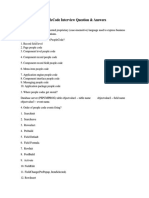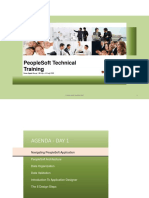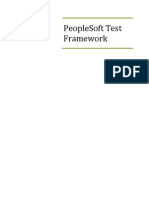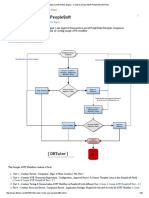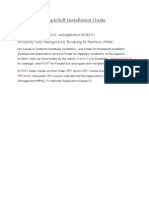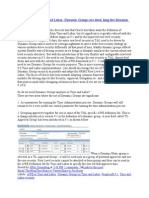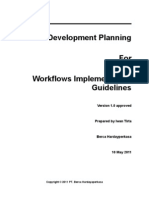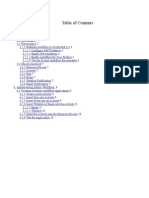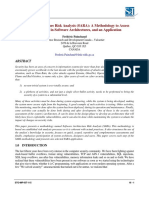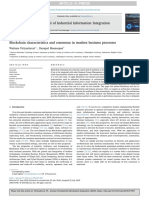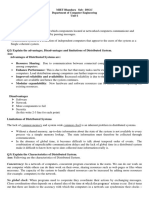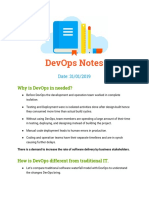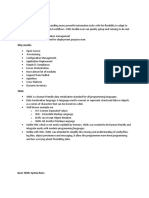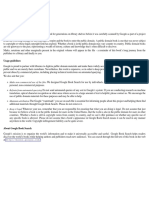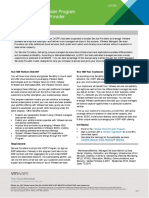PeopleSoft Workflow
Raja Palaniappan
www.psoftsearch.com
www.psoftsearch.com
�Many of the tasks that you perform throughout the day are part of larger tasks that involve several steps and several people For example, when you order supplies, you are really initiating an approval process: someone else reviews the order and either approves or denies it. If the order is approved, a purchase order is sent to the vendor. If it is denied, notification is sent back to the person who submitted the original order. The term workflow refers to this larger process.
www.psoftsearch.com
�Design the workflow
Build the underlying application
Create workflow maps
Define roles and users
Create a worklist record
Define workflow objects
Define event triggers
Test
www.psoftsearch.com
3
�1. Design :
Identify the workflow rules and how they relate to the data objects and transactions in the PeopleSoft system
2. Build the underlying application 3. Create workflow maps : Create graphical maps that represent your business process
www.psoftsearch.com
�4. Define roles and users : We can define a role as User list roles - a fixed list of individual role users (SYSTEM ADMINISTRATOR) Query roles - a query that selects role users at runtime(ROLE QUERIES) Route controls a routing factor that selects user at runtime(Department)
Rules The rules govern the business process Roles Defines how people fit into the workflow process Routings Determines which role owns the process at each step
www.psoftsearch.com
�5. Create a worklist record :
The Worklist can include several different types of items at once. For example, a manager might have entries related to approving both employee course enrollments and orders for supplies.
Entries in worklist are stored in database tables. You define the structure content of these tables by creating worklist records.
When a business event routes a work item to a worklist, it adds a row to the table. When a user finishes with a work item, the system marks the row as worked.
The worklist record determines which fields of information the system stores for each work item.
www.psoftsearch.com
�Worklist Record Definitions
System Fields The first fields in a worklist record definition must always be the following system fields:
BUSPROCNAME ACTIVITYNAME EVENTNAME WORKLISTNAME INSTANCEID TRANSACTIONID
The system uses these fields to link the items in the worklist with their tracking information, which is stored in the PeopleSoft-defined table PSWORKLIST. Application Fields The next set of fields in a worklist record definition are those specific to the application that creates the worklist. The system uses these fields to retrieve the associated record from the database when the user selects a worklist entry and moves to the page where the work is done. Worklist Display Fields The last two fields in a worklist record definition are for descriptive information that appears in the worklist. WORLKIST_URL WORKLIST_DESCR
These fields are optional.
www.psoftsearch.com
�6. Define workflow objects:
Events and routings are both objects on the workflow maps. To define these workflow objects, add the icons to the map, linked to the step representing the page where the triggering event occurs and map fields for the routing in the Field Map dialog box.
Events are conditions that have associated routings.
Routings can deliver data in two forms: worklist entries and email messages.
www.psoftsearch.com
�- Business Process icon
- Activity icon
Step icon
- Link icon
Business Event icon
- Worklist icon
Email icon
www.psoftsearch.com
�7. Define event triggers
After you create workflow processes, link them into the PeopleSoft applications by adding PeopleCode programs to the pages. The PeopleCode detects when a business rule has been triggered and determines the appropriate action. TriggerBusinessEvent function triggers a specified business event and the workflow routings that are associated with that event. It has to written under the Workflow PeopleCode event.
If Approval Rule sets are involved then the approvers and routings are selected dynamically based on those Rule sets. Approval Rule Sets are a set of routing rules created in Application Designer.
www.psoftsearch.com
10
�In Approval Rule sets, Virtual Approver determines the appropriate approver and sends a workflow routing. As each approver completes the approval, Virtual Approver determines whether additional approvals are needed and, if necessary, sends additional workflow routings. To trigger Virtual Approver from a page, use two PeopleCode functions in the record definition that is associated with the page: Use the Virtual_Approver function in the Save Edit PeopleCode. This function checks the approval rules that you defined in the approval rules sets and determines whether an item must be routed for approval. Use the Virtual_Router function in the Workflow PeopleCode. This function routes items to the next step in the approval process.
www.psoftsearch.com
11
�www.psoftsearch.com
12
�www.psoftsearch.com
13
�www.psoftsearch.com
14
�8. Testing
Create Vouchers and test your workflow.
www.psoftsearch.com
15
�Further Reading
Enterprise PeopleTools 8.49 PeopleBook: Workflow Technology
www.psoftsearch.com
16
